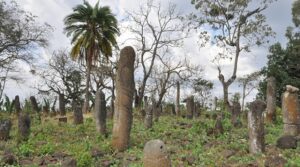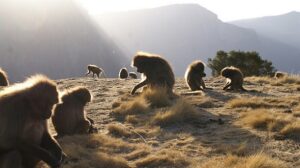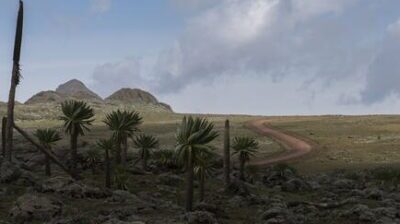Two Ethiopian Sites Nominated for Unesco’s World Heritage List
ADDIS ABABA – Ethiopia awaits Unesco’s final decision on its two sites – Gedeo Cultural Landscape and Bale Mountain National Park – nominated for the World Heritage List.
Ethiopia boasts two of the first dozen sites inscribed on the prestigious World Heritage List in 1978 – ‘Rock-Hewn Churches, Lalibela’ and ‘Simien National Park’.
Currently, the country is home to 9 natural and cultural World Heritage sites, including 8 Cultural and one natural – Semaine mountain- heritages.

It also has 6 sites listed on its Tentative List of potential Natural and Cultural heritage sites. Two of these sites – Gedeo Cultural Landscape and Bale Mountain National Park – are now under final consideration for the World Heritage List.
Ethiopia’s Authority for Research and Conservation of Cultural Heritage (ARCCH) submitted the official nomination dossier to Unesco two years ago.
A committee of 21 Unesco member states will review more than 200 sites and decide which to add to the list at a meeting in Saudi Arabia in September.
We are awaiting a positive response to their inscription of the two sites in September’s World Heritage Committee meeting, said Andualem Girmaye, director of the ARCCH, speaking to a local daily newspaper.
Inscribed World Heritages
Ethiopia has the most World Heritage properties in Africa, where places as unique and diverse as the wilds of East Africa’s Serengeti, and the Pyramids of Egypt also make up the world’s heritage.
Its Inscribed Sites are,
- Rock-Hewn Churches, Lalibela
- Simien National Park
- Fasil Ghebbi, Gondar Region
- Aksum
- Lower Valley of the Awash
- Lower Valley of the Omo
- Tiya
- Harar Jugol, the Fortified Historic Town
- Konso Cultural Landscape
Sites under consideration and nomination
A Tentative List is an inventory of those properties which each State Party intends to consider for nomination, Ethiopia’s Tentative List involves,
- Dirre Sheik Hussein Religious, Cultural and Historical Site
- Bale Mountains National Park
- Gedeo Cultural Landscape
- Melka Kunture and Balchit
- Lake Tana Island Monasteries and its Adjacent Wetland Natural and Cultural Heritages
- Holqa Sof Omar: Natural and Cultural Heritage (Sof Omar: Caves of Mystery)
- Sacred Landscapes of Tigray
- The Cultural Heritage of Yeha
The two sites on the Tentative list are subject to Unesco’s examination for world heritage status.
Gedeo Cultural Landscape
The Gedeo cultural landscape – located in the Gedeo zone of southern Ethiopia, has multiple facets. The Agroforestry system that was developed and adopted locally to sustain livelihood and the megalithic monuments, Rock art sites, and traditionally protected ritual forests are its main components.
Gedo is reputed for the thousands of megalithic monuments that dotted the landscape. Recent inventory works have so far identified 47 sites with megalithic monuments. Its archaeological wealth also shows that Neolithic herders were active in the landscape. The Petroglyphic art in ancient caves dates back to the second and third millennium BC.
Until today the Gedeo elders upkeep sacred forests and sites under a traditional management system named the Songo. The system serves for conflict resolution, rituals, and protection of sacred places.

Bale Mountain National Park
The Park – nominated as natural heritage criteria – covers the largest area higher than 3000m above sea level in Africa, and its highest peak, Tullu Dimtuu, at an altitude of 4377m (asl), is the second highest peak in Ethiopia.
The park includes an Afroalpine plateau of over 3500m asl, which is the largest area of Afroalpine habitat in Africa, as well as a major section of moist tropical forest, the second largest in Ethiopia. Its ecosystem and associated diversity of habitats are an internationally recognized center for endemism and biodiversity, with a quarter of mammals and 6% of birds in the area being Ethiopian endemics.
The mountains and forests of this ecosystem are also a critically important water catchment area for southern Ethiopia and western Somalia, supplying perennial water to 12 million people in the lowlands of the two countries.









Pingback: Two Ethiopian Sites Nominated for Unesco’s World Heritage List – Ethiopian Monitor - Optimistic News Today